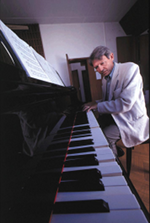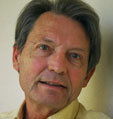
Please note that this event was originally scheduled to October 1st and has been postponed to October 15th.
About the event
This session will feature the re-broadcast of the lecture presented by Jean-Claude Risset on March 17, 2011 followed by a one-hour discussion with CIRMMT member Caroline Traube as the respondent. The main goal is to revisit the topic, and then, in the discussion that will follow, evaluate what has changed since the research was first presented. Participants are encouraged to submit their questions and comments in the chat of the platform used.
To access the event: www.cirmmt.org/join/DL1 (platform and details coming soon).
CIRMMT FUNDING ELIGIBILITY REMINDER: CIRMMT student members should note that attendance at Distinguished Lectures is necessary to fulfill the eligibility requirements for funding opportunities. Attendance will be tracked via sign-up sheets for in-person events, and the chat of the online meeting platform used.
Abstract
Digital technology permits to extend compositional control down to the level of the sonic microstructure – to compose the sounds themselves, beyond composing with sounds. As Pierre Schaeffer liked to say, "music is meant to be heard": this control must be appreciated by the ear. In the title, I mentioned perception, not psychoacoustics: the latter name tends to evoke knowledge which is insufficient in that context, since most traditional psychoacoustics has focused on simple, isolated sounds, while music deals with complex, evolving sounds.
I shall first recall how the development of technology since 1875 has opened new avenues for music, enabling composers to work on the vocabulary of music and not only on the grammar, especially when they use sound synthesis. I shall then give many sound examples drawn mostly from my own music as instances of gaining insight on perception while preparing my computer-synthesized musical compositions.
Biography
 "Directeur de recherche" emeritus, CNRS, worked on computer music in Marseille. Scientific and musical studies (Ecole Normale Supérieure, piano, composition with André Jolivet). Worked at Bell Labs with Max Mathews in the sixties to develop the musical resources of computer sound synthesis (imitation of instruments, including computer brass synthesis; pitch paradoxes; synthesis of new timbres; sonic development processes; sound catalog of synthesized sounds, 1969). Head of Computer Department at IRCAM (1975-1979). At M.I.T. Media Labs, developed in 1989 the first "Duet for one pianist", whereby the pianist triggers an accompaniment on the same acoustic piano that depends upon what and how he or she plays.
"Directeur de recherche" emeritus, CNRS, worked on computer music in Marseille. Scientific and musical studies (Ecole Normale Supérieure, piano, composition with André Jolivet). Worked at Bell Labs with Max Mathews in the sixties to develop the musical resources of computer sound synthesis (imitation of instruments, including computer brass synthesis; pitch paradoxes; synthesis of new timbres; sonic development processes; sound catalog of synthesized sounds, 1969). Head of Computer Department at IRCAM (1975-1979). At M.I.T. Media Labs, developed in 1989 the first "Duet for one pianist", whereby the pianist triggers an accompaniment on the same acoustic piano that depends upon what and how he or she plays.
Video Archive
APA video citation:
Risset, J.-C. (2012, October 22). Music is meant to be heard: Perception is central in (my) computer music -
CIRMMT Distinguished Lectures in the Science and Technology of Music. [Video file].
Retrieved from https://www.youtube.com/watch?v=nOv30rHV7Ds
